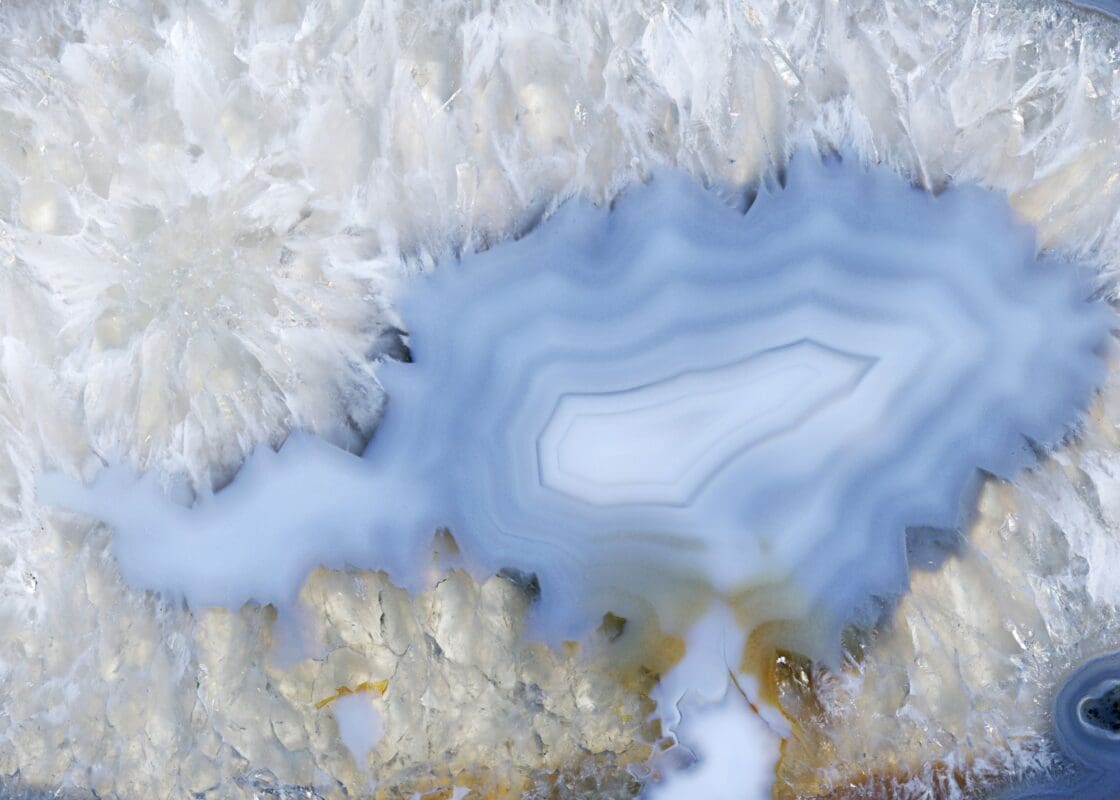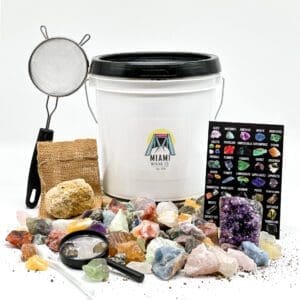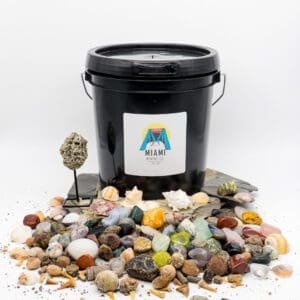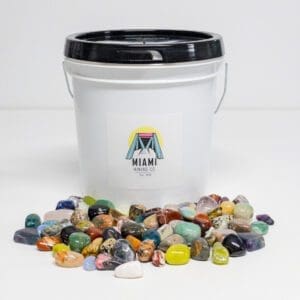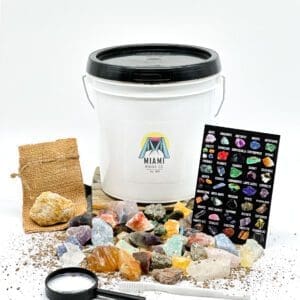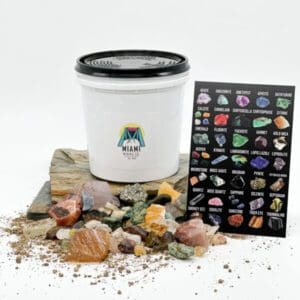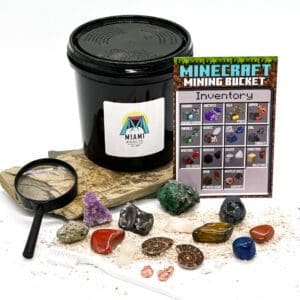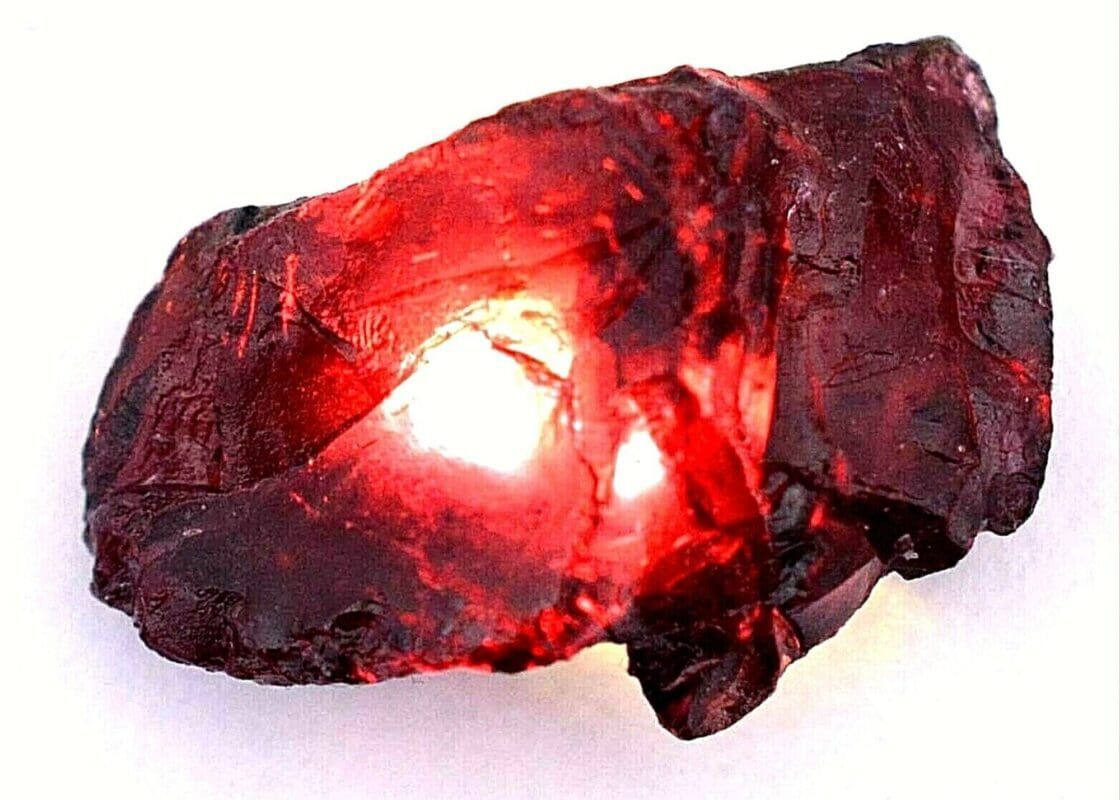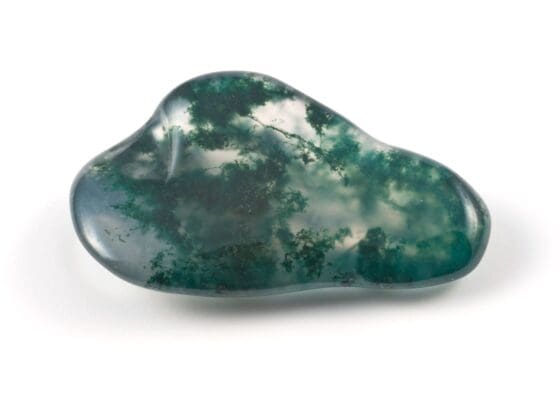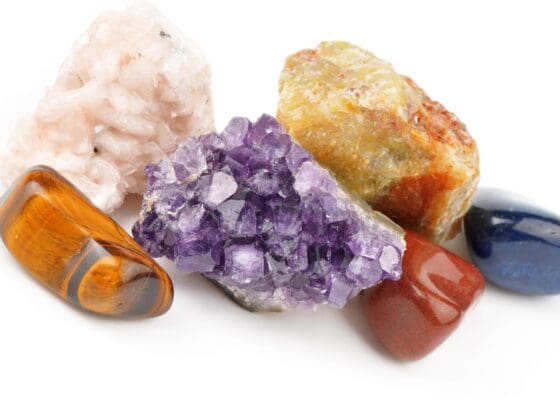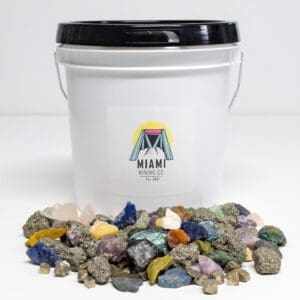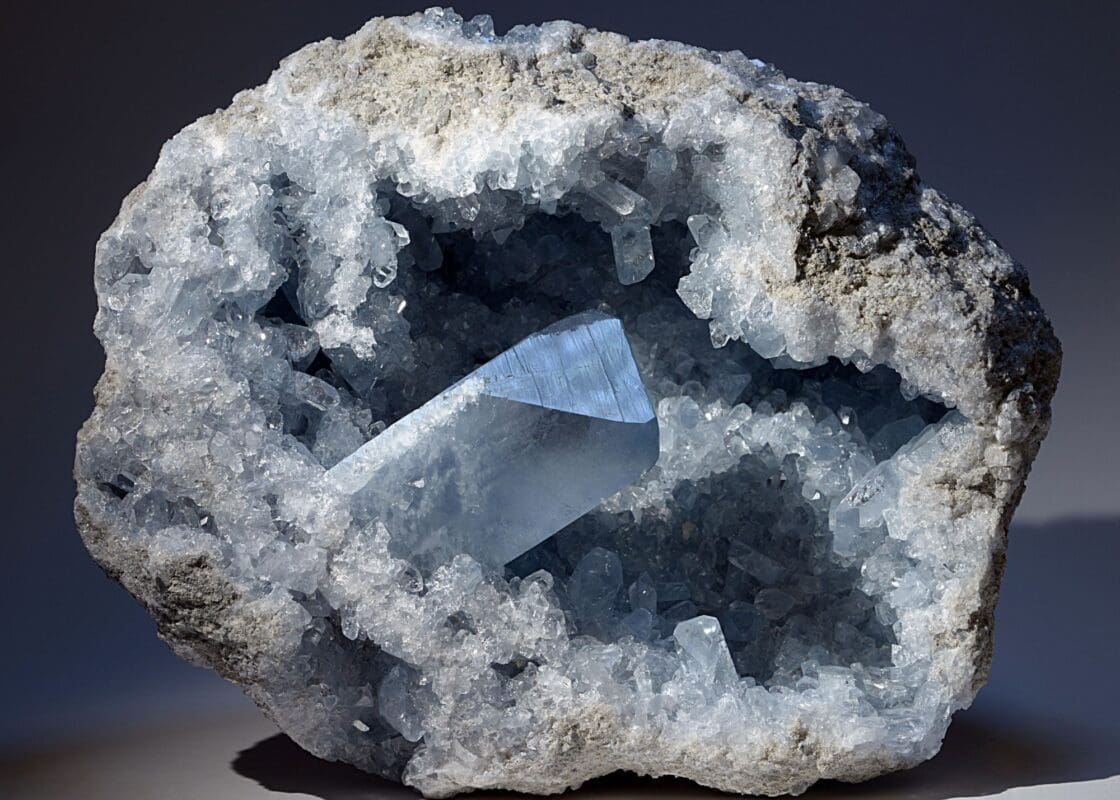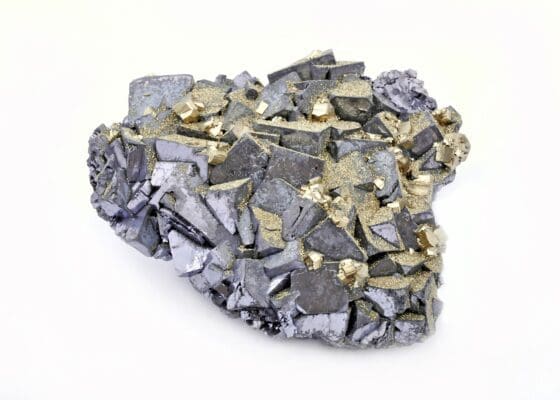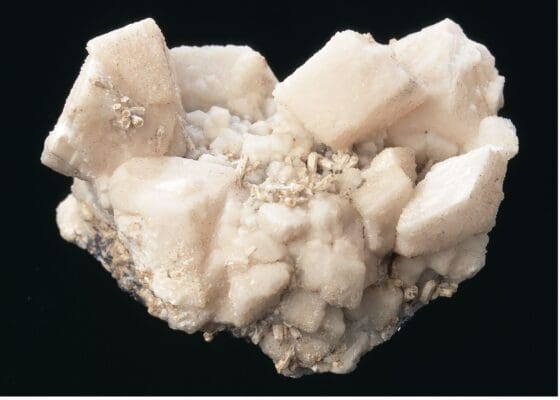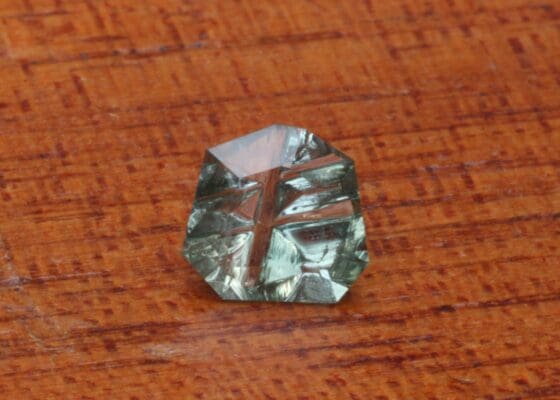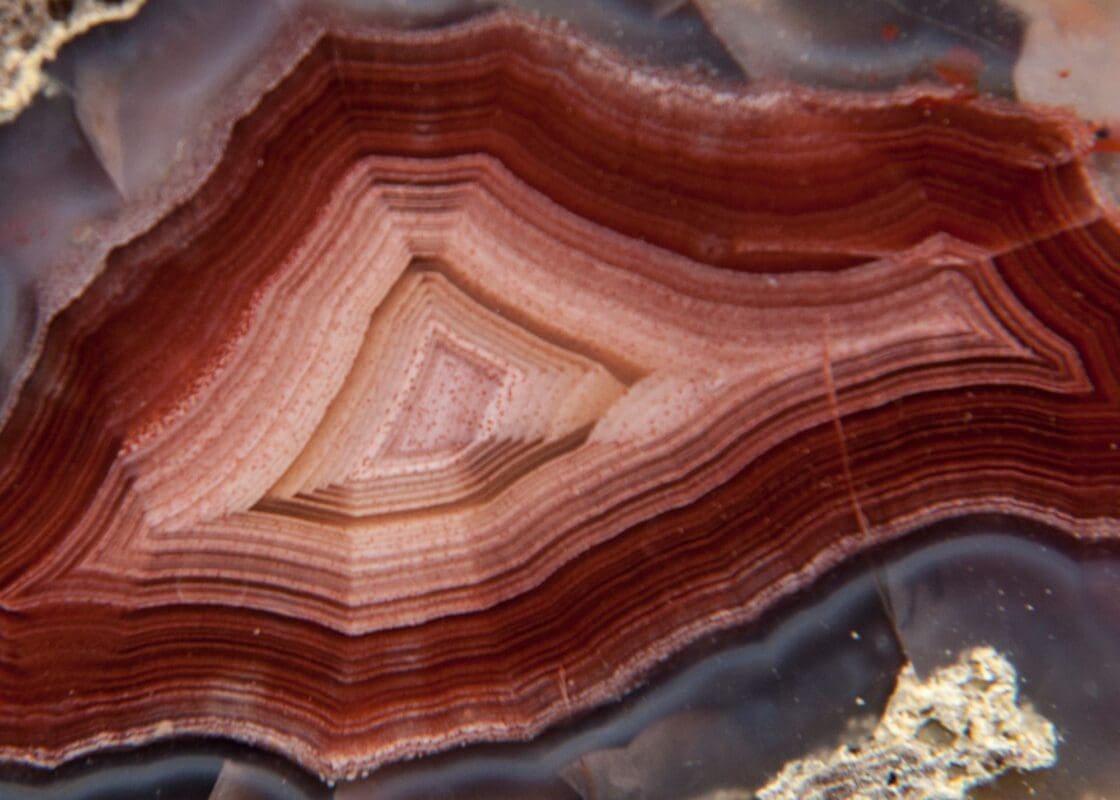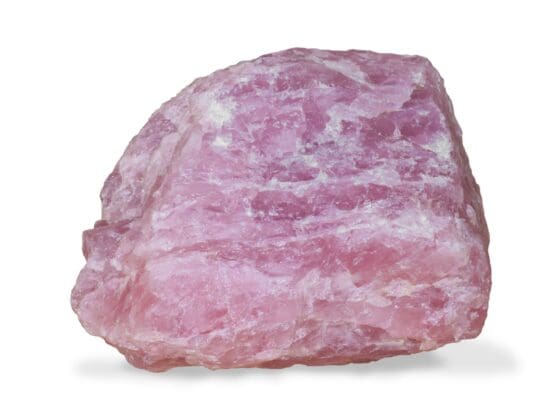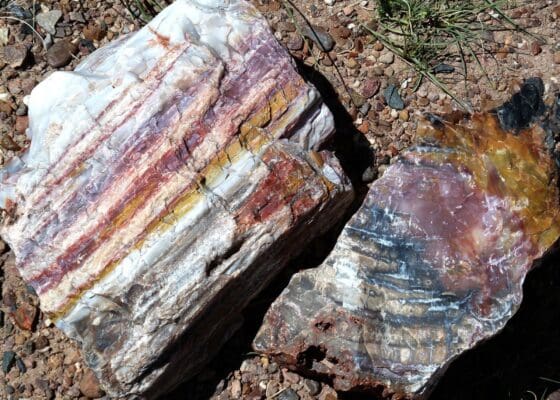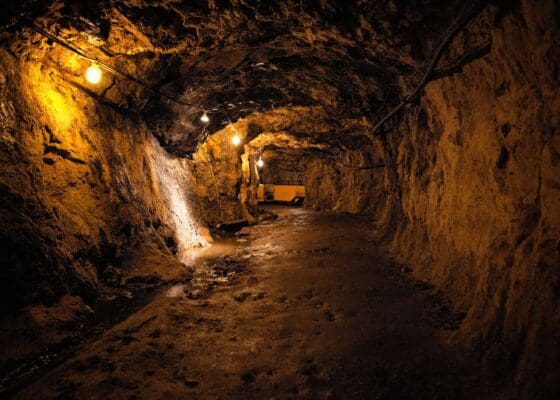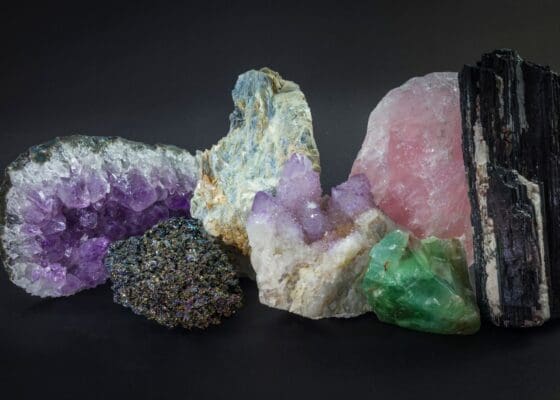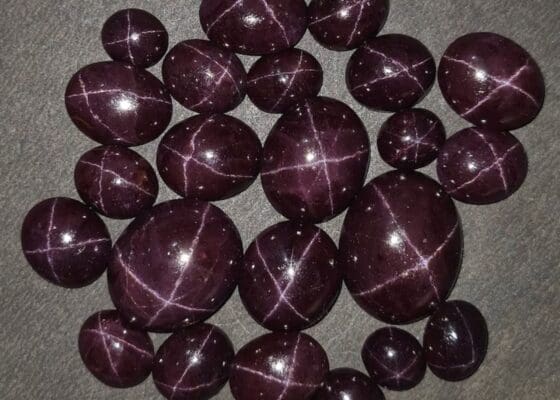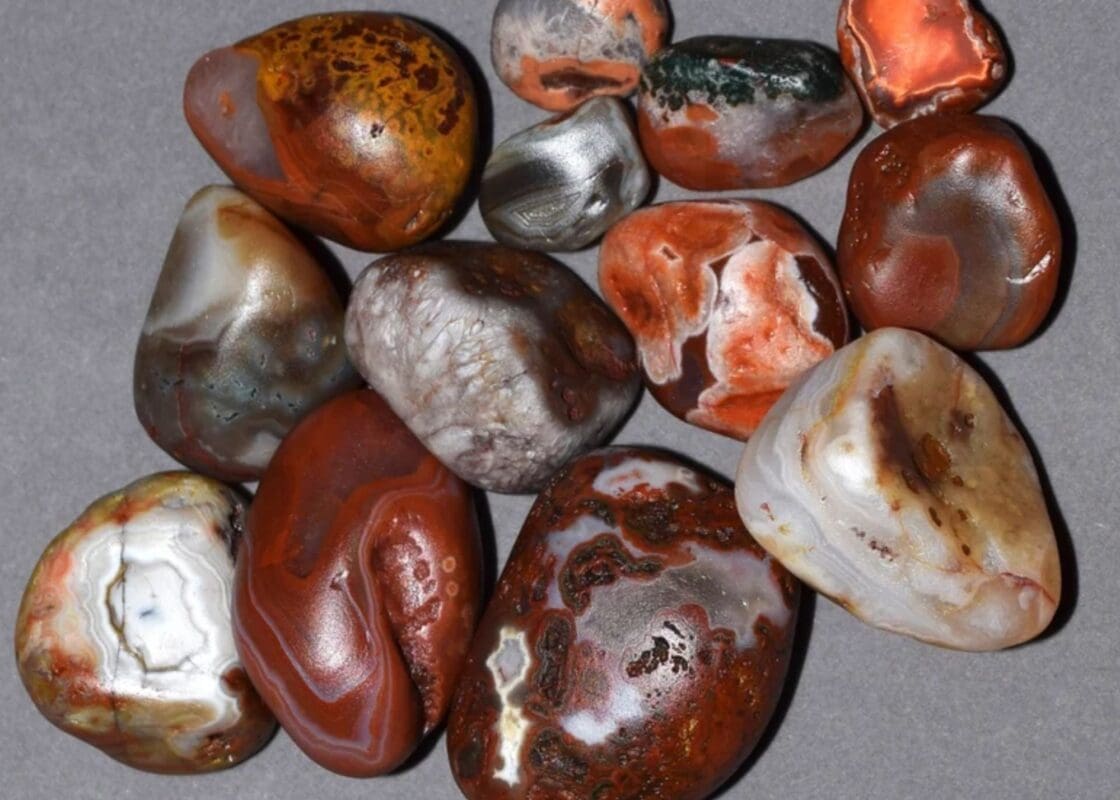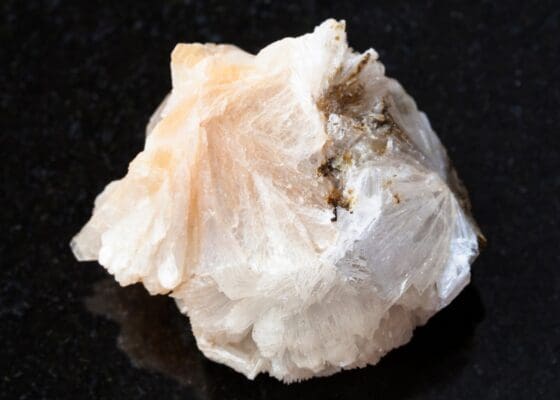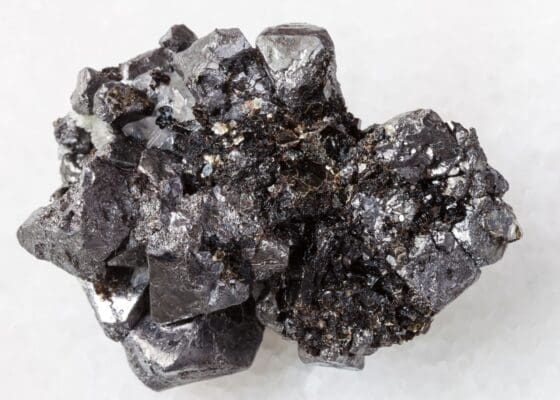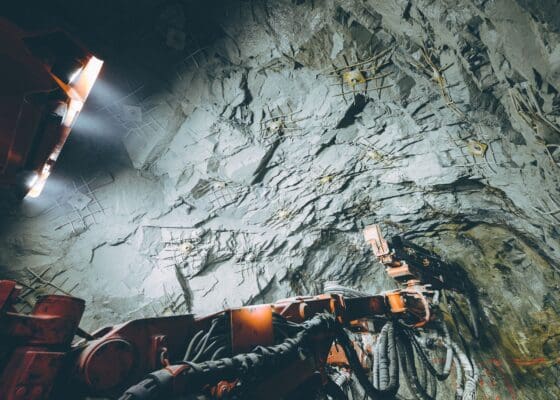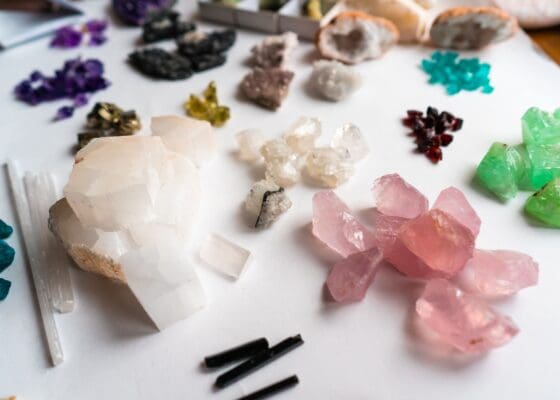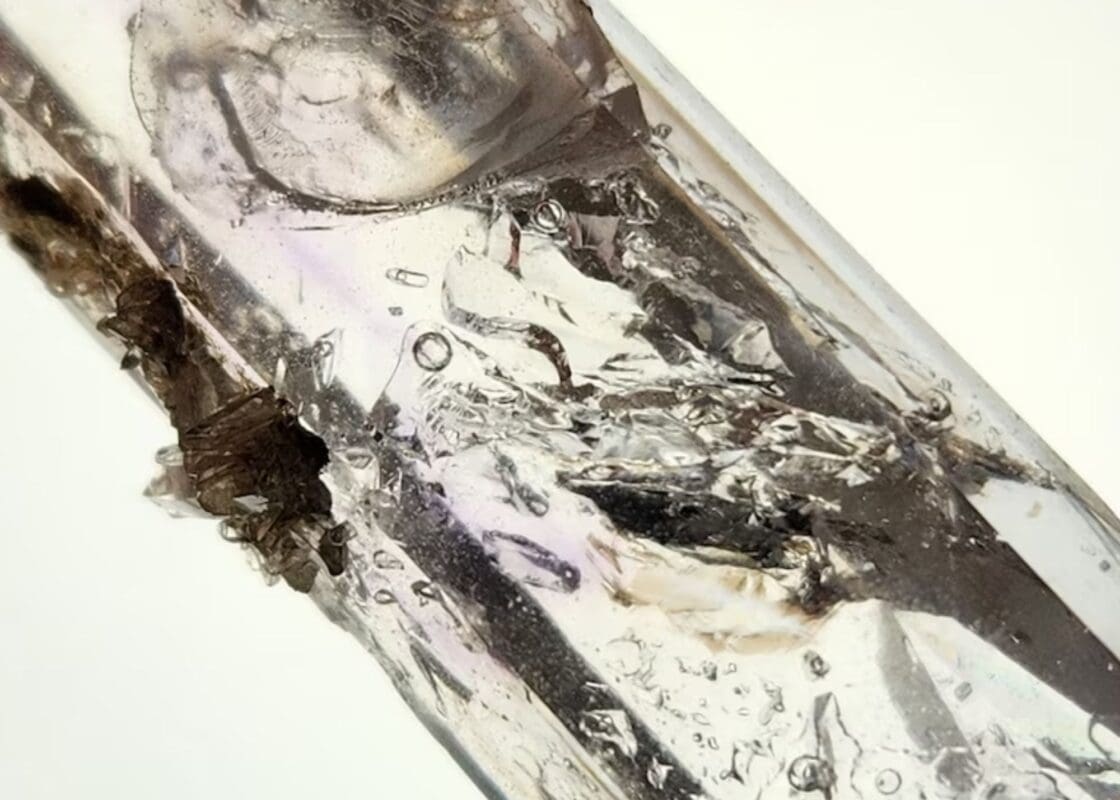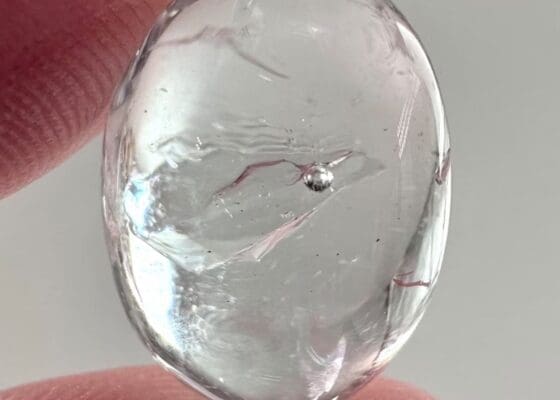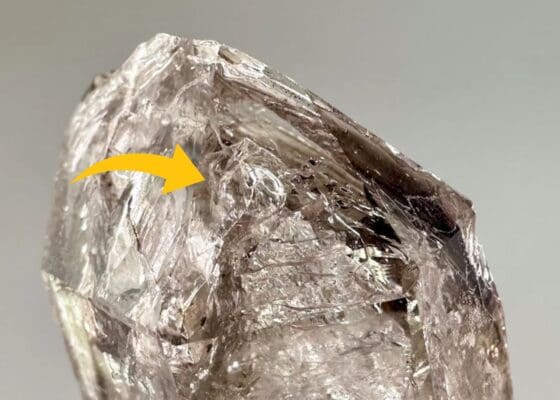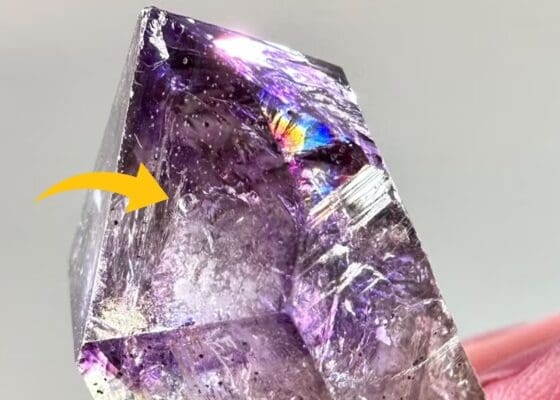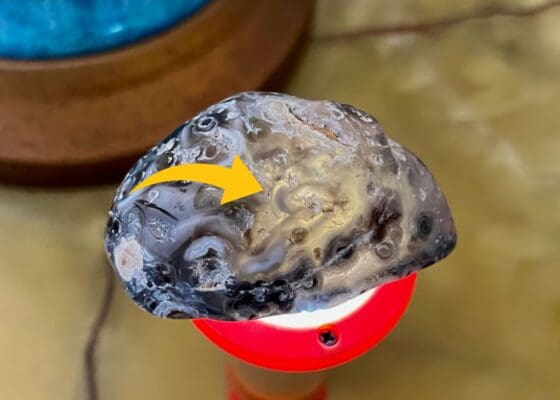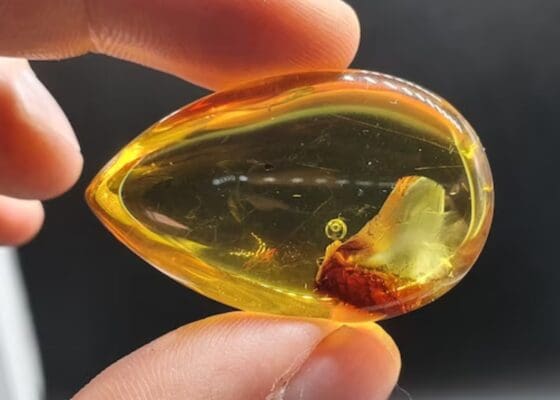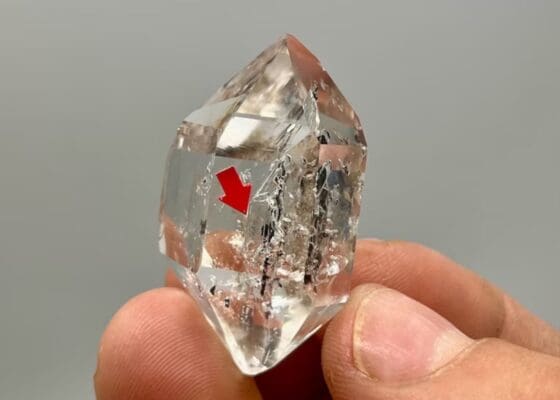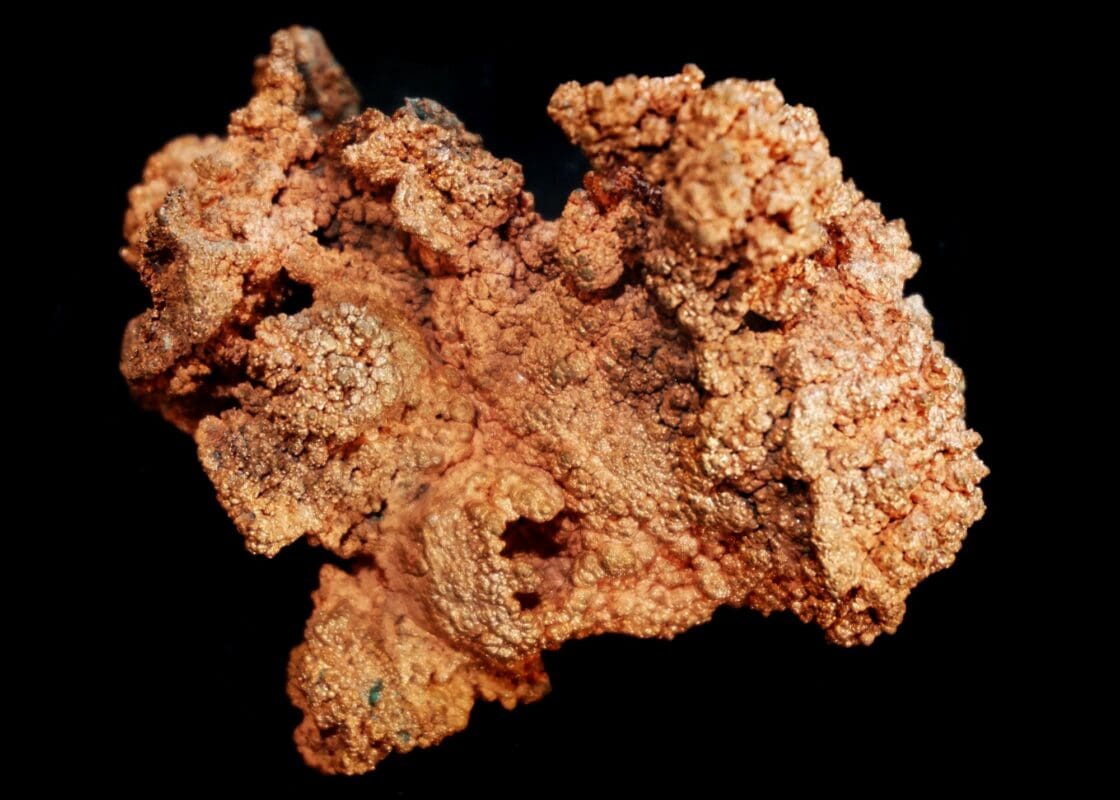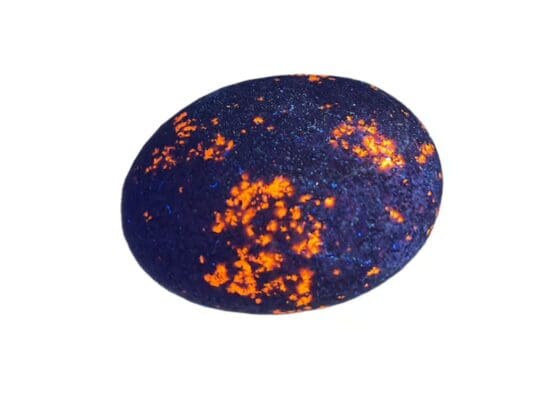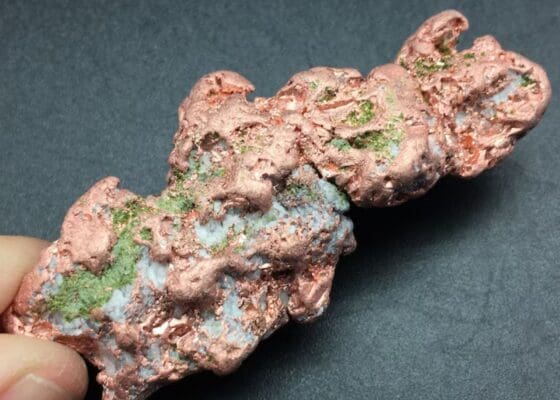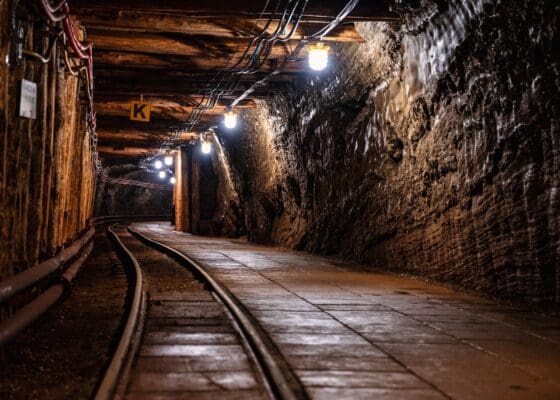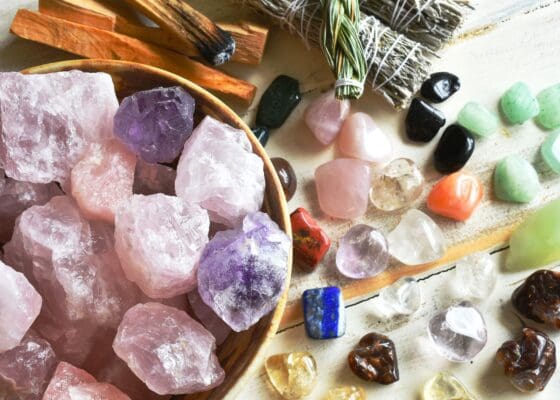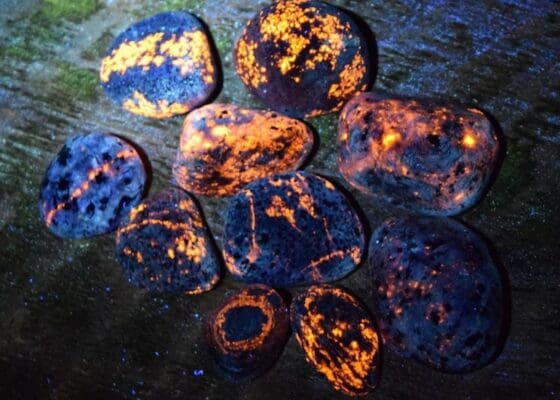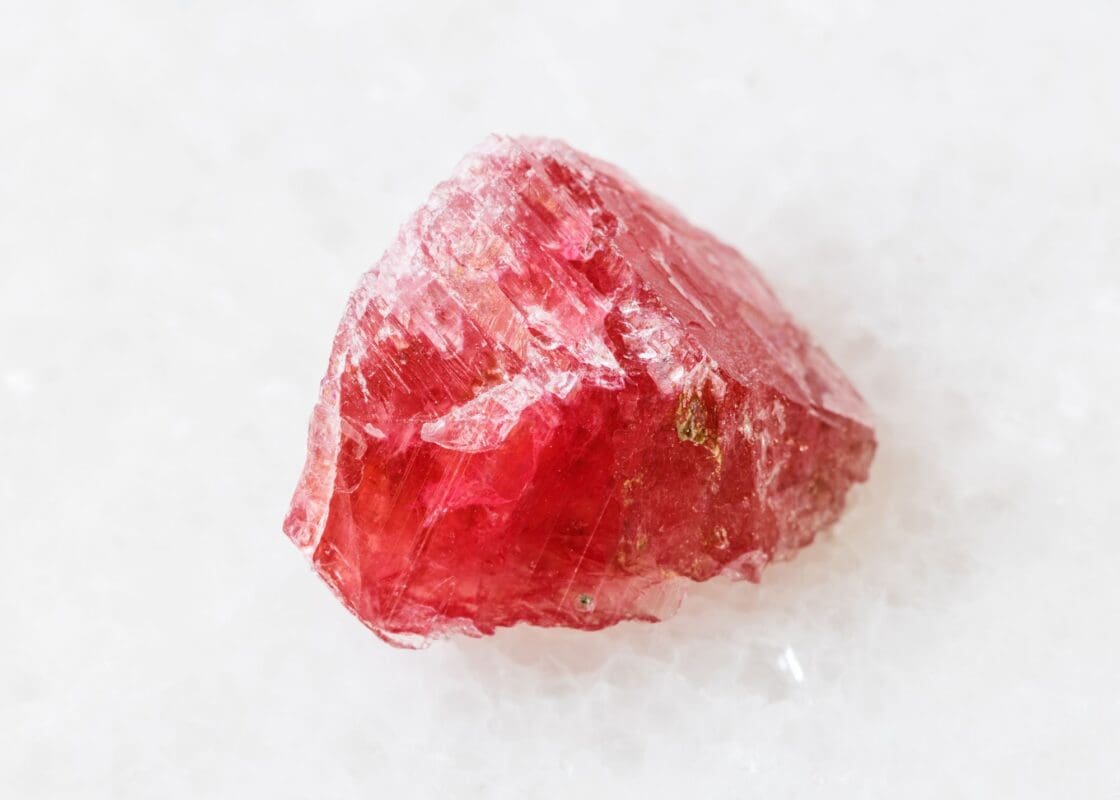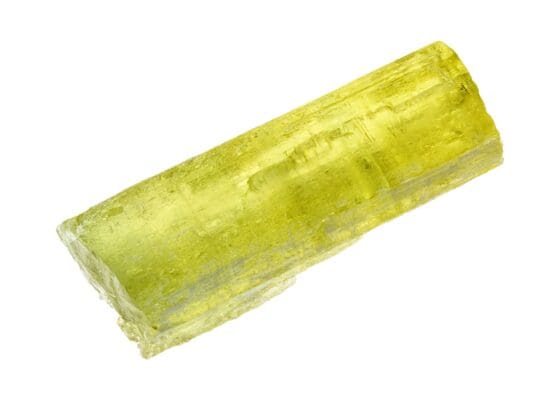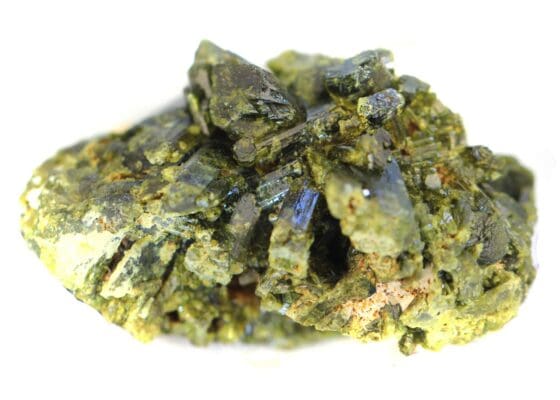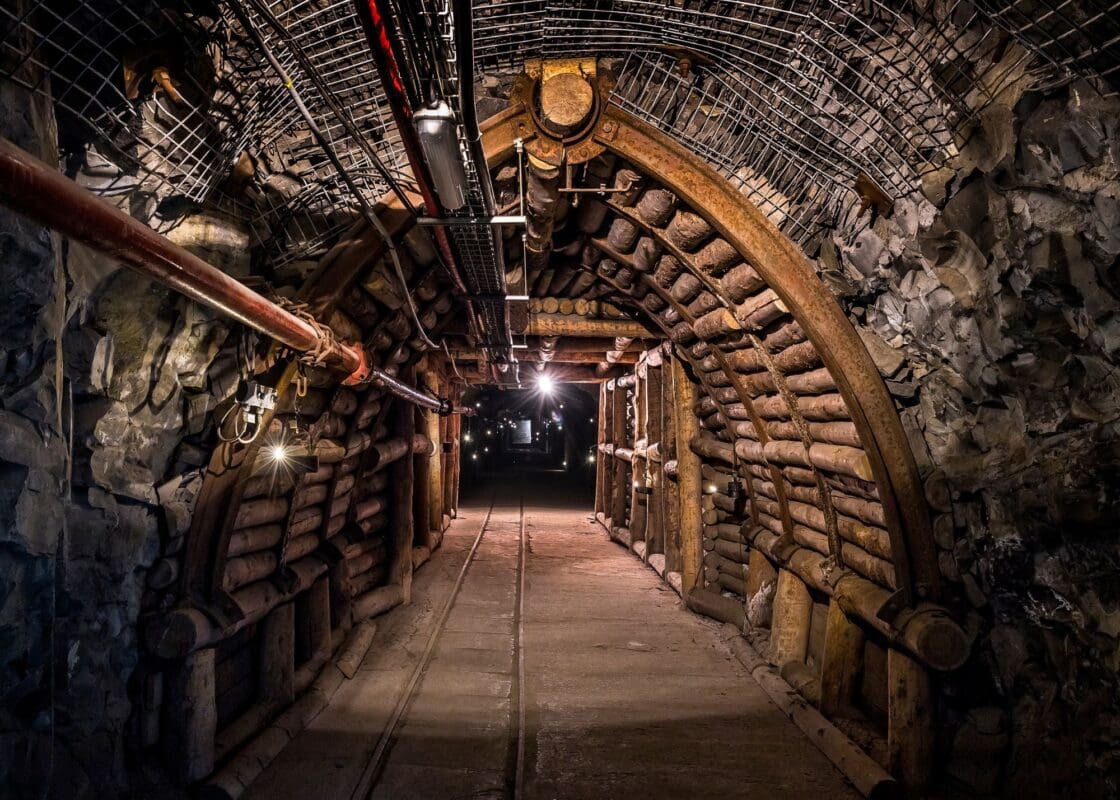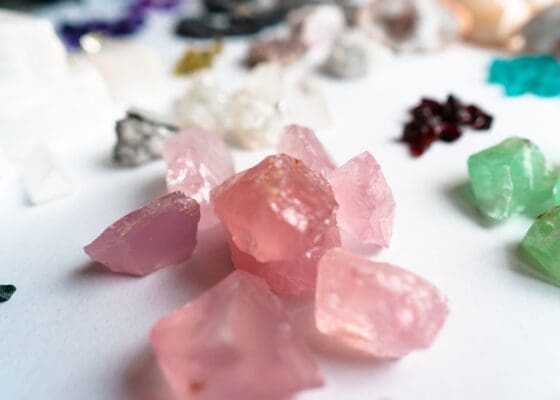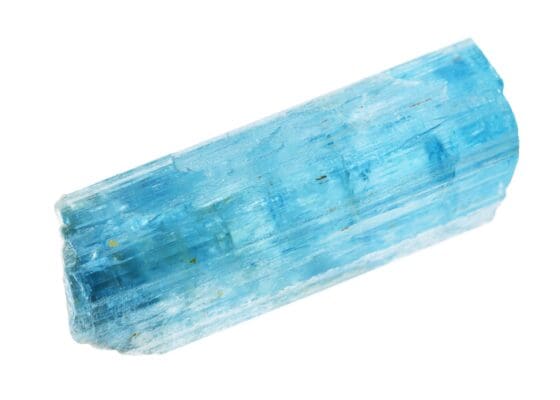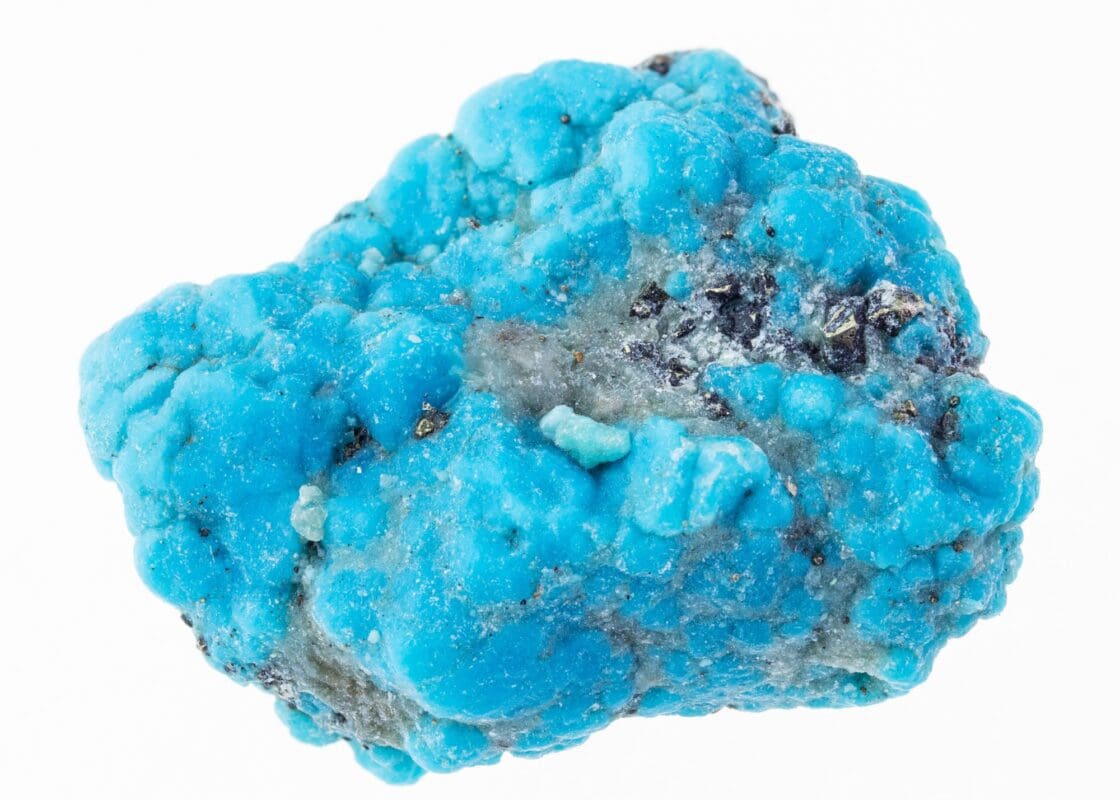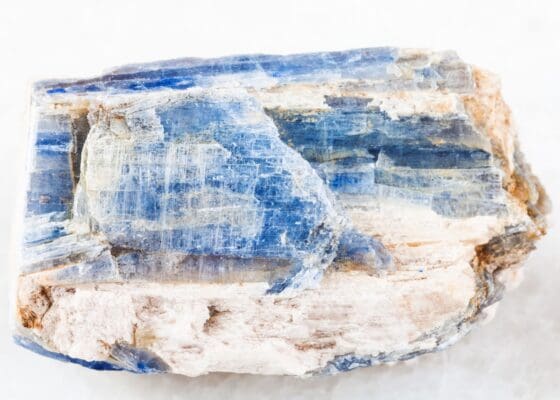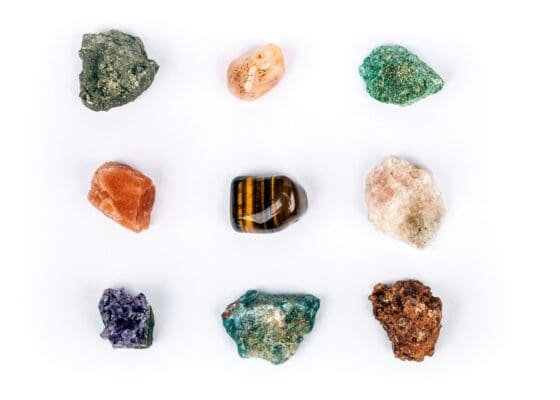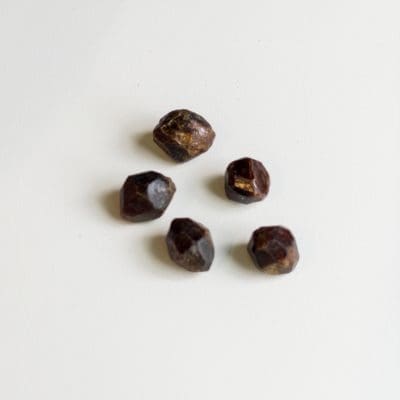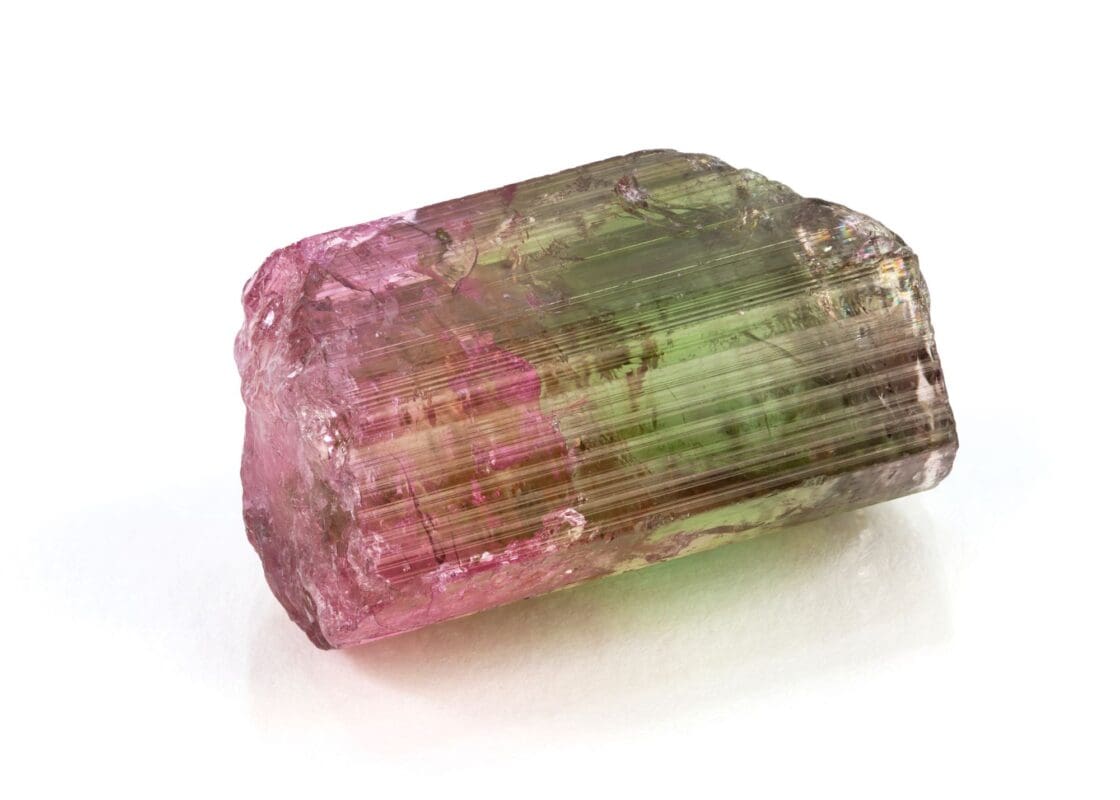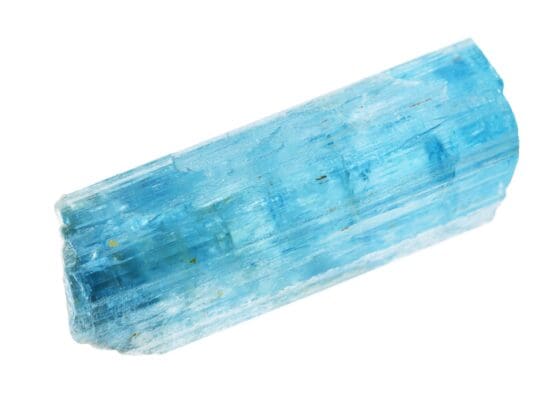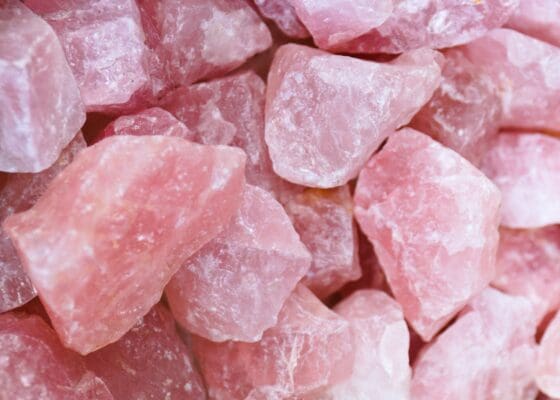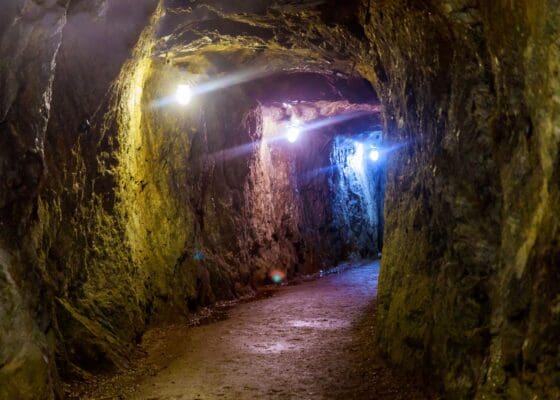Gem mining in Nebraska is more than just a recreational activity; it’s a journey into the heart of the state’s geology and history. Unearthing gemstones beneath Nebraska’s soil taps into a rich tapestry of stories and natural beauty. In this article, we’ll guide you through the state’s most coveted gemstones, the best mining locations, and even tips to make your gem hunting venture a success.
The Most Popular Gemstones in Nebraska
While Nebraska might not be the first state that comes to mind when one thinks of gemstones, it houses a unique blend of both rare and common finds. From the unique patterns of the Fairburn Agate to the humble, yet captivating jasper, Nebraska’s rich geology offers a spectrum of gemstones to intrigue any enthusiast.
Rare Gemstones Found in Nebraska:

| Gemstone | Description |
|---|---|
| Fairburn Agate | Known for its vibrant colors and unique patterns, it’s one of the most sought-after agates in the country. |
| Blue Agate | A striking blue variant of agate, rarer than its counterparts. |
| Water Chert | This translucent chert has a unique water-like clarity, making it a collector’s delight. |
| Petrified Palm | A type of petrified wood, but specifically from ancient palm, prized for its detailed preservation. |
| Nebraska Jasper | While jasper is common, the patterns and colors found in Nebraska’s version make it unique. |
Common Gemstones Found in Nebraska:
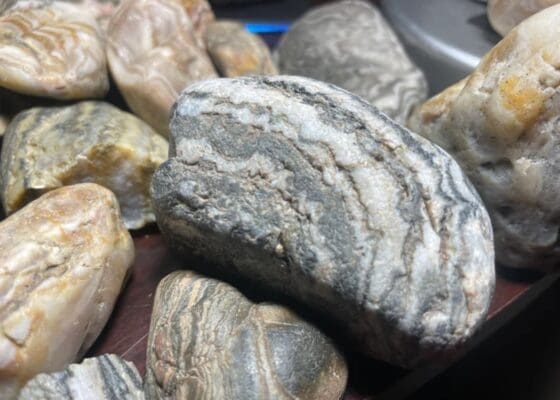
| Gemstone | Description |
|---|---|
| Prairie Agate | The state’s signature stone, often found in various shades of red, orange, and brown. |
| Rose Quartz | A pale pink to rose red quartz, commonly found in river valleys. |
| Ordinary Chert | Unlike its rarer water counterpart, this chert is opaque and found in various shades. |
| Moss Agate | Characterized by its transparent background and moss-like inclusions. |
| Banded Agate | Agate with colorful bands, often in white, red, or brown hues. |
| Carnelian | A brownish-red mineral which can be semi-precious when translucent. |
| Hematite | Often found in banded iron formations and can have a red streak. |
| Fossil Coral | Ancient coral that has been replaced with agate or chalcedony, preserving its structure. |
| Quartz Crystals | Clear to milky white, these crystals are known for their six-sided prisms. |
| Petrified Wood | Ancient trees turned to stone, capturing a moment in time. |
This diverse range of gems makes Nebraska an attractive destination for both novice and experienced gem hunters. The thrill of discovering a rare Fairburn Agate or unearthing a piece of ancient, petrified history is an experience that many treasure seekers won’t soon forget.
Top Gem Mining Locations in Nebraska
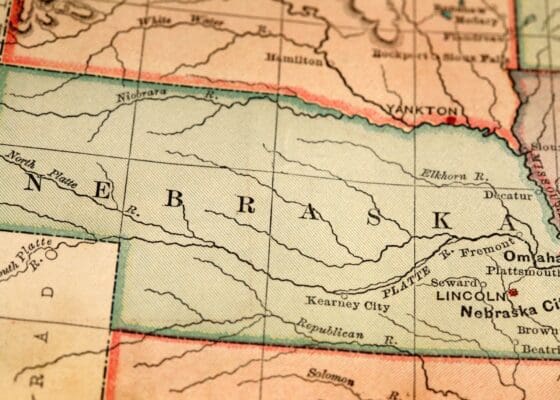
- Chadron Creek Trading Post: Situated in Chadron, this site is renowned for Prairie Agates and petrified wood. They usually operate from 9 am to 5 pm during the mining season, with an entrance fee of $10 for adults and $5 for children.
- Niobrara River Valley: A premier spot for finding a diverse array of agates, especially in the spring and summer months. While many sections of the valley are free to access, always make sure to have permission if it’s private land.
- Toadstool Geologic Park: Located near Harrison, this park isn’t just for gem hunting; it’s also a historical journey with its unique rock formations. There’s a daily park permit fee of $5.
- Gem Valley near Scottsbluff: As the name suggests, this valley is a haven for gem enthusiasts, primarily offering quartz crystals and chert. It’s open for mining from April to September, with a standard fee of $8 for the day.
- Agate Fossil Beds National Monument: Near Harrison, this site is famous for its fossils, but also for the presence of Fairburn Agates. While there’s no fee for gem hunting, there’s a suggested donation to support the park’s maintenance.
- Snake River near Merriman: This river is not only scenic but also a hotspot for water chert and moss agates. Public riverbanks are free to access, but ensure private lands have permissions.
- Ogallala Agate Beds: These beds near Ogallala are primarily known for their rich deposits of banded agate. There’s a nominal fee of $7 for adults, with group discounts available.
- Platte River Basin: Spanning a vast area, this basin offers a mix of jasper, chert, and quartz. While the public areas are free, it’s recommended to check local regulations for any restricted zones.
- Mormon Island near Grand Island: Besides its historical significance, this island on the Platte River is a good site for rose quartz and carnelian. Access is usually free, but during peak season, a minimal charge might apply.
- Nebraska National Forest: Located near Halsey, the forest has areas rich in petrified wood and various quartz varieties. While there’s no specific fee for gem hunting, a park entrance fee of $6 applies.
Before heading out to any of these locations, always call ahead or check their websites for any changes in operating hours, fees, or other important details. It’s also crucial to respect the land, follow all rules, and practice ethical gem hunting.
History of Gem Mining in Nebraska


Gem mining in Nebraska, with its broad stretches of rolling plains and lush river valleys, isn’t just an exploration of the land, but also a dive into the state’s rich history. Nebraska’s terrain, carved by ancient waters and shaped by wind over millennia, hides tales that span from the indigenous peoples who once called this land home to settlers who were drawn by the promise of untapped resources.
The story of gem mining in Nebraska is not one of large-scale operations or vast, commercial endeavors. Instead, it is an intimate tale of individual enthusiasts, families, and small communities coming together in shared fascination and wonder for the earth’s treasures. The 1950s saw a surge in this interest, particularly after the discovery of the Prairie Agate, which quickly became Nebraska’s signature stone. This discovery led to families and friends embarking on weekend trips, equipped with shovels and buckets, in hopes of unearthing these beautiful stones.
As years passed, additional gems and minerals were found. The Fairburn Agate, with its intricate patterns, soon became a sought-after gemstone, not just in the state but across the country. Local fairs and markets started featuring these gems, leading to a mini-economic boom in several Nebraska communities. Schools and educational institutions began organizing field trips, aiming to educate students about the state’s geological heritage.
Beyond just the economic implications, gem mining in Nebraska became a means to reconnect with the land. For many, it was a way to appreciate nature, understand the state’s geology, and even delve into the spiritual or metaphysical properties that many believe these stones possess.
It is also noteworthy to mention the ties of gem hunting to Nebraska’s indigenous tribes. Before it became a recreational activity, Native American communities held some of these gemstones in high regard, using them for ceremonial purposes, tools, and trade.
Today, the legacy of gem mining in Nebraska stands as a testament to the state’s rich geological and cultural tapestry, a blend of curiosity, history, and natural wonder that continues to lure both residents and visitors alike.
Gem Mining Regulations in Nebraska


While the thrill of unearthing a gemstone in Nebraska’s expansive landscapes is undeniable, it’s imperative that aspiring and seasoned gem hunters alike understand the intricate web of regulations governing this activity. These regulations, set in place by both state and local authorities, aim to strike a balance between allowing the public to engage with Nebraska’s rich geological heritage while preserving the integrity of its lands and resources for future generations.
1. Public vs. Private Land: The foremost consideration when gem hunting in Nebraska is determining land ownership. Mining or collecting on private property without explicit permission is not only disrespectful but also illegal. Before setting foot on a potential gem site, make sure to ascertain land ownership and acquire necessary permissions or permits. In contrast, public lands may offer more leniencies, but it’s always recommended to consult with local management agencies.
2. Collection Limits: While Nebraska encourages the public’s interest in gem hunting, there are often restrictions on the volume or type of materials you can collect. These limits ensure that gem resources aren’t depleted and that there’s a fair opportunity for all enthusiasts.
3. Commercial Use: If you’re collecting gemstones for personal use, there’s often more flexibility. However, if your intent is to sell or commercially distribute these gemstones, additional regulations and permits may apply.
4. Protected Areas: Certain regions in Nebraska, particularly those with ecological or historical significance, may be designated as protected or restricted. Sites like national parks, monuments, or archaeological sites usually fall under this category. In these areas, gem hunting or any form of mineral collection is either prohibited or heavily regulated.
5. Environmental Considerations: Nebraska’s regulations emphasize minimal environmental impact. This means that any digging or excavation should be done responsibly. Refilling holes, not disturbing vegetation, and adhering to ‘Leave No Trace’ principles are essential.
6. Native American Lands: Some lands in Nebraska are under the jurisdiction of Native American tribes. These lands may have their own sets of regulations or prohibitions concerning gem mining, given the cultural and spiritual significance of certain stones.
7. Reporting Finds: In some cases, particularly when it comes to rare or historically significant finds, there might be an obligation to report your discovery to local authorities or museums. This ensures that significant pieces of Nebraska’s geological history are documented and preserved.
In conclusion, while Nebraska offers an expansive canvas for gem enthusiasts to explore and discover, it’s paramount to do so within the framework of established regulations. Not only does this ensure the preservation of the state’s gem resources, but it also guarantees that the practice remains sustainable, enjoyable, and accessible for all future gem hunters.
Necessary Tools and Equipment for Gem Mining in Nebraska
Embarking on a gem hunting expedition in Nebraska’s diverse landscapes requires not only passion and patience but also the right set of tools. These tools, tailored to the nature of Nebraska’s mines, maximize one’s chances of uncovering hidden treasures and ensure the safety and efficiency of the hunt.
1. Screening and Classifying Tools: Reveal those hidden treasures!
Description: Given that many gems in Nebraska are found within riverbeds or loose soil, having a set of sifting screens can be invaluable. By sifting through the dirt or sand, you can separate potential gemstones from the surrounding debris.










🛒 Explore Top Screening Sets on Amazon
2. Shovels and Trowels: Digging deep or just scratching the surface?
Description: These are essential for digging in areas where gems are buried or concealed beneath the surface. Always opt for sturdy, durable tools that can withstand the rigors of excavation.










🛒 Find Quality Shovels and Trowels on Amazon
3. Picks and Hammers: The backbone of any gem hunting endeavor.
Description: For those venturing into areas with exposed bedrock or larger rock formations, a geological hammer is indispensable. It aids in breaking apart rocks to reveal potentially gem-rich veins within.










🛒 Check Out Best Picks and Hammers on Amazon
4. Buckets: Your trusted companion for carrying treasures.
Description: These are handy for collecting larger quantities of dirt or gravel from promising areas. Once collected, you can systematically sift through the material, searching for gems.










🛒 Shop for Reliable Buckets on Amazon
5. Magnifying Glass: Every detail counts!
Description: This magnifying tool helps in closely inspecting potential gems, ensuring you don’t overlook small but valuable stones. It’s also beneficial for identifying inclusions or other distinguishing features in your finds.










🛒 Grab Your Magnifying Glass on Amazon
6. Guidebooks and Field Guides: Knowledge at your fingertips.
Description: Carrying a field guide specific to Nebraska gemstones can aid in immediate identification. This not only enhances the experience but also ensures that you recognize valuable or rare finds.










🛒 Discover the Best Field Guides on Amazon
7. Containers and Bags: Organize, store, and flaunt your finds.
Description: As you collect specimens, having durable bags or containers prevents damage to your finds and makes it easier to carry them.










🛒 Shop for Storage Solutions on Amazon
8. First Aid Kit: Better safe than sorry!
Description: Accidents, though rare, can happen. A basic first-aid kit equipped with bandages, antiseptics, and other emergency supplies ensures you’re prepared.










🛒 Secure your First Aid Kit on Amazon
In essence, while the thrill of gem hunting lies in the unexpected discoveries, being well-prepared ensures you can tackle challenges head-on. With the right tools in hand, each expedition becomes a blend of adventure, learning, and, hopefully, some sparkling finds.
Tips and Tricks for Successful Gem Mining in Nebraska


Nebraska, with its diverse geological tapestry, offers a captivating realm for gem hunters. Yet, the promise of finding a hidden treasure is maximized when one combines the spirit of adventure with knowledge and a few time-tested tricks of the trade. Here are some insights to enhance your gem mining experience in the Cornhusker State:
1. Research is Gold: Before heading out, invest time in understanding the types of gemstones prevalent in specific regions of Nebraska. A well-informed miner can spot and identify gems with greater ease, making the hunt more fruitful.
2. Local Wisdom: Engaging with local communities can prove invaluable. Often, longtime residents possess insights about lesser-known locations, the best times to visit, or even tales of significant finds in the past.
3. Seasonal Timing: While gem hunting can be pursued year-round, spring and early summer often unveil newly eroded gems in riverbeds or exposed ground, making these seasons particularly rewarding.
4. Patience Pays: Gem hunting isn’t a race; it’s a meditation. Slow down, enjoy the process, and remember that sometimes, the smallest or most inconspicuous stones hold the most beauty or value.
5. Look for Telltale Signs: In regions known for certain gemstones, look for indicative signs. For instance, areas rich in agates might have fragments or smaller pieces on the surface, pointing to larger deposits beneath.
6. Safety First: Always inform someone about your whereabouts, especially when exploring remote areas. And while the allure of a promising site can be strong, never risk personal safety for a potential find.
7. Tread Lightly: Respect Nebraska’s natural habitats. This means minimizing disturbances, not leaving trash behind, and restoring any areas you might have dug up.
8. Join a Club: Consider joining a local gem or mineral club. These organizations often organize group expeditions, provide educational resources, and are a hub for networking with fellow enthusiasts.
9. Document Your Finds: Maintain a journal or log of your discoveries. This not only serves as a personal record but can also be a tool for future trips, helping you identify patterns or hotspots.
10. Stay Updated: Regulations, best practices, or gem occurrences might change over time. Regularly update your knowledge by attending workshops, reading publications, or engaging in online forums.
In essence, while Nebraska’s lands generously offer up their treasures, it’s the blend of preparation, respect for the environment, and an insatiable curiosity that often leads to the most rewarding gem hunting experiences.
Handling Your Gemstone Finds
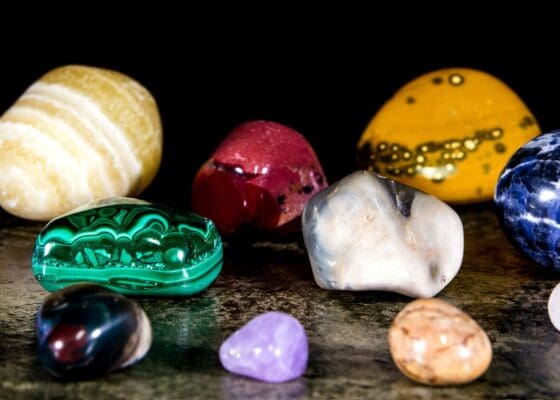

The euphoria of unearthing a gemstone in Nebraska’s vast landscapes is only the beginning of your gem journey. Once you have these natural wonders in hand, the next steps you take can greatly influence the beauty, longevity, and value of your finds. Here’s a guide to handling and cherishing your newfound treasures:
1. Initial Cleaning: Begin by gently cleaning your gemstones with water to remove any loose dirt or mud. A soft brush, like an old toothbrush, can be useful for this, especially for gems with crevices or intricate patterns.
2. Proper Identification: Before any advanced cleaning or handling, it’s crucial to identify your gem. Some gemstones can be sensitive to certain cleaning agents or methods. A gemstone identification book tailored to Nebraska finds or consulting with local gem enthusiasts can be beneficial.
3. Advanced Cleaning: For stubborn stains or residues, consider using mild soaps or specialized gem cleaning solutions. Always ensure that your cleaning method is safe for the specific type of gemstone you have.
4. Storage: Store your gemstones in individual pouches or containers to avoid scratches from contact with other gems. Soft cloth pouches or boxes lined with velvet are ideal. For particularly valuable or fragile finds, consider display cases.
5. Display: If you wish to showcase your gems, use stands or shadow boxes that offer protection from dust. UV protective display cases can also guard against potential color fading from prolonged sunlight exposure.
6. Documentation: Alongside physical storage, maintain a digital or paper log detailing the date of discovery, location, type of gemstone, size, and any unique characteristics. This can be invaluable for insurance, resale, or simply personal recollection.
7. Valuation: If you believe you’ve found something of significant value, consider having it appraised by a certified gemologist. This not only gives you a sense of its market value but also provides validation of its authenticity and quality.
8. Maintenance: Like any precious item, periodic maintenance ensures your gem remains in pristine condition. This might include re-cleaning, checking for any damage, or revaluating its worth.
9. Learning More: Enhance the significance of your find by delving deeper into its geological, historical, or metaphysical background. Knowledge adds layers of appreciation to the tangible beauty of your gemstone.
10. Sharing Your Story: Your gem-hunting journey, the anticipation, the discovery, and the aftermath, is a tale worth sharing. Consider joining online forums, local clubs, or even starting a blog detailing your adventures.
Ultimately, each gemstone you find in Nebraska carries with it a fragment of the state’s geological narrative. Handling it with care, respect, and knowledge ensures that its story—intertwined with your own—continues to sparkle for years to come.
Famous Gemstone Finds in Nebraska
Nebraska, often known for its vast prairies and rich agricultural history, hides beneath its soil tales of dazzling discoveries. Over the years, the state has witnessed some extraordinary gemstone finds, each narrating a unique story of serendipity, persistence, and the state’s rich geological tapestry.
1. The Ashfall Fossil Beds: While not a gemstone per se, the Ashfall Fossil Beds are undeniably one of Nebraska’s most treasured geological finds. Discovered in the 1970s, this site revealed a wealth of well-preserved prehistoric animal fossils, embedded within volcanic ash, offering invaluable insights into life millions of years ago.
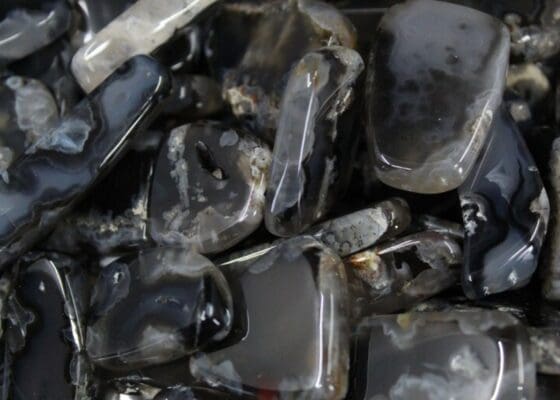

2. Nebraska Blue Agates: Over the decades, several impressive Blue Agates have been unearthed across Nebraska, especially in its northwestern regions. Some of these specimens, with their intricate banding and deep blue hues, have found their way into notable gem collections.
3. The Cornhusker Garnets: In the early 1990s, a gem enthusiast stumbled upon an unusually large garnet cluster in central Nebraska. This discovery, soon nicknamed the ‘Cornhusker Garnets,’ remains a testament to the state’s unexpected gemstone wealth.
4. Jasper Jewels: Throughout Nebraska’s history, various instances of impressive Jasper finds have been documented. These gemstones, with their intricate patterns and myriad of colors, showcase the state’s diverse mineral compositions.
5. The Prairie Peridot: A few lucky prospectors have been thrilled to discover peridots in Nebraska. One particular find in the late 20th century, a vibrant green specimen with exceptional clarity, gained attention among gem enthusiasts nationwide.
6. Fairbury Fossils: Near the town of Fairbury, several fossilized gemstones, remnants of ancient flora and fauna, have been recovered. These unique gemstones offer a fusion of history and natural beauty.
7. Historical Quartz Sites: Quartz crystals, in their various forms, have had numerous notable discoveries across the state. Some large, clear specimens have even been considered museum-worthy, reflecting both size and near-perfect clarity.
8. Nebraska Pyrite Suns: These unique, disc-shaped formations of pyrite, also known as ‘pyrite dollars,’ have been found in coal mines around the state. Their striking appearance and rarity have made them sought-after collectibles.
In essence, Nebraska’s soil and rock layers tell tales of geological wonders, time capsules of epochs gone by, and the sheer unpredictability of nature’s creations. Each famous find, whether displayed in a museum or nestled in a personal collection, stands as a testament to Nebraska’s unsung status as a gem hunter’s haven.
Additional Gem Mining Opportunities
Exploring Nebraska’s rich geological offerings is merely the beginning of a broader gem hunting adventure in the heart of America. Nebraska’s neighboring states, each with their unique geographies and mineralogical histories, provide extended opportunities for enthusiasts eager to expand their horizons. Here’s a peek into what awaits:
1. South Dakota Gem Mining: A trip north takes you to South Dakota, home to the famous Black Hills and a treasure trove of gold, quartz, and the unique Fairburn agate.
2. Iowa Gem Mining: Venturing east into Iowa, one can encounter the beautiful Keokuk geodes containing crystals like quartz, calcite, and even the rare and stunning blue celestite.
3. Missouri Gem Mining: Further southeast, Missouri offers vibrant drusy quartz and the state’s official gem, the mesmerizing Missouri River Pearl.
4. Kansas Gem Mining: To the south lies Kansas, boasting an array of fossils and the occasional find of jasper and agate.
5. Colorado Gem Mining: Heading west to Colorado opens doors to a world of minerals, from the famous aquamarine deposits of Mount Antero to the diverse offerings of the Rocky Mountains, including topaz, garnet, and gold.
For those with a true passion for gem hunting, the journey seldom ends within one state’s borders. The vastness and variety of America’s heartland beckon with the allure of undiscovered treasures, each state offering a unique chapter in the continent’s geological story.
Unearth the best gem mining spots and tips with our Gem Mining Near Me guide.
Unveiling Nebraska’s Hidden Sparkle
Gem hunting in Nebraska is more than a mere pursuit; it’s a journey through time, a dance with nature, and a testimony to the state’s silent, sparkling secrets. The allure lies not just in the possibility of unearthing a tangible treasure but in the stories each gemstone whispers of epochs gone by, of ancient seas and volcanic eruptions. As you tread Nebraska’s vast landscapes, each stone, be it common or rare, binds you to the very soul of the earth.
However, for those unable to venture into the Nebraskan wilds or those wanting to savor the excitement from the comfort of their homes, there’s a delightful alternative: the Gem Mining Kit. This kit brings the thrill of discovery to your doorstep, allowing you to sift through rich mineral soil and possibly stumble upon gems from various corners of the world. Whether you tread the Nebraskan plains or pan through a home kit, the heart of the experience remains—embracing the joy of discovery and celebrating nature’s hidden marvels.

